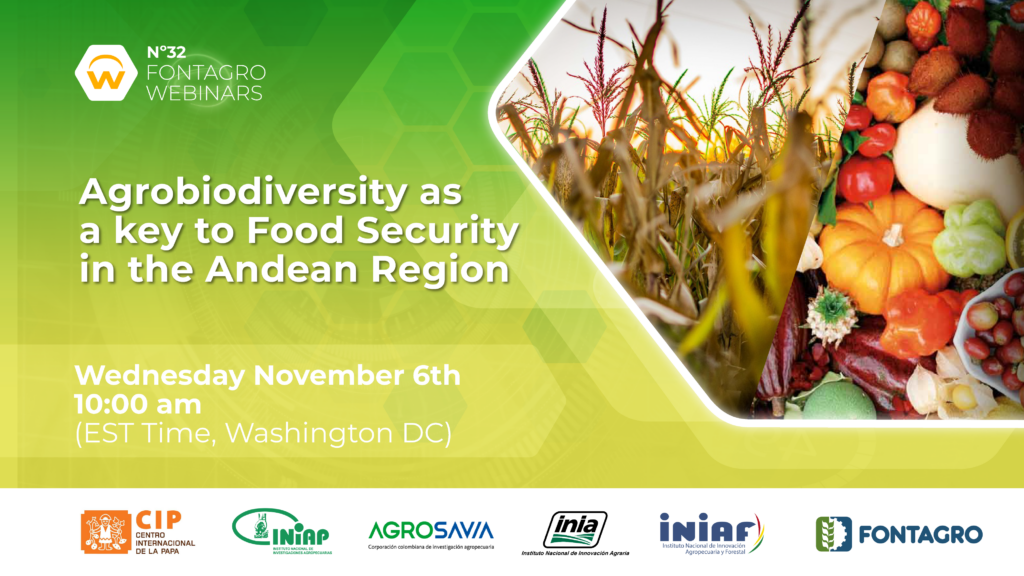
This webinar, led by FONTAGRO, the International Potato Center – CIP, the National Institute of Agricultural Research of Ecuador – INIAP, the Colombian Corporation for Agricultural Research – AGROSAVIA, the National Institute of Agrarian Innovation of Peru – INIA, and the National Institute of Agricultural and Forestry Innovation of Bolivia – INIAF, aims to highlight the achievements of biodiversity in the Andean region applied to the improvement of nutrition and food security.
The event seeks to promote success stories in research, extension, and technological transfer that are being carried out in different countries of the region. To enrich this space, we will have the collaboration of researchers who will share successful experiences on these topics. It is expected that this event will contribute to highlighting the role of INIAs at the international level, aligning our actions with COP16 and other events related to biodiversity conservation and sustainable food that are currently taking place.
It will be held next Wednesday, November 6, at 10:00 AM (Eastern Time, Washington DC).
To register for this free-access webinar, please visit: https://forms.office.com/r/5UnKRhA8dX
***
About FONTAGRO
FONTAGRO was created 1998 with the purpose of promoting the increase of the competitiveness of the agri-food sector, ensuring the sustainable management of natural resources and the reduction of poverty in the region. The objective of FONTAGRO is to establish itself as a sustainable financing mechanism for the development of agricultural technology and innovation in Latin America and the Caribbean and Spain, and to establish a forum for the discussion of priority topics of technological innovation. The member countries are: Argentina, Bolivia, Chile, Colombia, Costa Rica, Ecuador, Spain, Honduras, Nicaragua, Panama, Paraguay, Peru, Dominican Republic, Uruguay and Venezuela. In the last 27 years 204 regional agricultural innovation platforms have been co-financed for an amount of US $ 150.7 million, which has reached 531 institutions and 35 countries worldwide.
